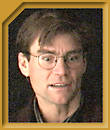



Photo Gallery
Climbing Forum
| ||
More Interviews
Lynn Hill
Heidi Howkins
Wally Berg
Ed Viesturs
Eric Simonson
Dave Hahn
Pete Athans
Greg Child
Jim Wickwire
Vernon Tejas
Mark Twight
Makalu Gau

| Download a FREE media player to listen. [Windows Media] [RealPlayer]  "A lot of people assume that we're sponsored climbers, that we just sort of get paid to traipse around the world...." | |
"It's getting more normal or more understood, more accepted in our society. It's just been that way for a lot longer in Europe..." | |
"II often get asked, you know, 'What's your favorite climb?' 'What's the best climb you ever did?' And of course that's an impossible question....." | |
"It was an ACL that I tore in 1992, and I didn't get it fixed because Steve Swensen and I were off to Gasherbrum IV...." | |
|
Streaming Video Interviews Climbing as a child in Montana | |
 | |
TRANSCRIPT | |
REALPLAYER modem speed (28k) (56k) (T1) | |
WINDOWS MEDIA modem speed (28k) (56k) (T1) | |
|
Alex steers clear of the "world's best" hype.  | |
TRANSCRIPT | |
REALPLAYER modem speed (28k) (56k) (T1) | |
WINDOWS MEDIA modem speed (28k) (56k) (T1) | |
"There's Alex Lowe up here," said two-time Everest summiter Dave Hahn, "and then there's the rest of us down here. The guy's just really that much better than everybody else."
| "'Is it an accident I started climbing?' he asks, smiling. 'Well, in some ways, everything in life's an accident, right? It's just sort of the path you walk down and the things you stumble into that determines what you do with your life...'" |
Journalist Jon Krakauer, author of the bestselling Into Thin Air, agrees. After a climbing trip to Antarctica's Queen Maud Land in 1996, Krakauer wrote, "We relied utterly on Alex," to complete a new route, and in fact only Conrad Anker could swap leads with Lowe. "We're all at this one level," Anker himself once said to a reporter, "and then there's Alex."
But Lowe takes issue with that view, and he does so in his polite, down-home Montana-boy way.
"I sort of steer clear of the whole "World's Best Climber" stuff," Lowe told MountainZone.com. "It's a sort of hype, really, and climbing just doesn't lend itself to that. There might be a fastest runner, or a highest jumper—you can measure that, quantify that. But climbing is different. It's just too subjective. And it's a lifestyle, it's not a sport. So I don't really think there is such a thing as a 'best climber.' There are certainly talented climbers, and there are persistent, sort of anal climbers, you know? They just can't give up. And those are the ones that sort of go on and do lots of climbs, and harder climbs. Those are the people who just can't shake it off. That's what I am."
 Alex Lowe, Sail Peak [click to zoom] (photo: Gordon Wiltsie) |
Of course, that list overlooks climbs such as his solo ascent of the North Face of the Matterhorn, and more than a dozen big wall climbs in Yosemite. With his bona fides established beyond question, the real wonder may be that Alex Lowe's fame is not even greater. While he may be America's most famous climber, people who aren't climbers still tend to draw a blank at the mention of his name. That can be contrasted with Europe, where climbers such as Reinhold Messner are truly household names.
On this, Lowe said, "Here's my philosophy. I just think that in countries like Switzerland, France and Italy, mountains are normal to people. In the United States, mountains are a small part of the country. People in Nebraska and Iowa, they sort of write off all climbers as this fringe element of sort of suicidal characters. But in Europe, climbers are normal. In fact, that's what Swiss families do: they hire a guide and go climbing, generation after generation. Alpinism is a household sport, the way "normal" sports—you know, basketball and football—are here. Those people are considered the real athletes. But climbing is sort of getting there, it's getting more understood, more accepted in our society. It's just been that way for a lot longer in Europe."
As Lowe forges new ground in terms of "mountain athletes," what's remarkable is his innate ability to maintain his equanimity despite the hype that swirls around him. He remains, in person, utterly disarming and without affectation. This unique quality, an unshakable sense of self, is probably the result of a childhood in which his native mountains of Montana became his natural playground, and his family his tutors. Alex Lowe is nothing if not well grounded.
"Is it an accident I started climbing?" he asks, smiling. "Well, in some ways, everything in life's an accident, right? It's just sort of the path you walk down and the things you stumble into that determines what you do with your life. I guess that it's all sort of circumstantial that my parents chose to live in Montana, and they loved to hike. That's what we did. We didn't pack up the station wagon and go to Disneyland; we packed our backpacks and went off the Bear Tooth Wilderness or the Missions or the Bob Marshall. I have all these great memories of growing up a kid and trying to keep up with my dad and my mom and my brothers with this big pack on my back.
| "Nearly every corner you look around in Antarctica has uncharted climbing territory to be explored. It's just phenomenal. When we went to Queen Maud Land in '96, it was the most dramatic landscape I've ever seen...." |
"My dad did a little scrambling, so we'd set up camp at a mountain lake, fish for the evening and the next day we'd sort of scramble up a peak. For some reason, I really liked that. Montana at the time was sort of a backwater for climbing, but there were a few kids in high school who liked it as much as I did. So we went off and got some ropes and started climbing around on more technical peaks.
"My beginnings were very traditional, especially compared with today's kids, who start out on plastic and get incredibly strong and then, maybe, move into the mountains."
By the time he was ready for Yosemite, in the late '70s, Lowe had been climbing—in tennis shoes— 5.8s and 5.9s, and "falling off of 5.10s." But when he finally arrived at Yosemite, this Montana boy was not awed by what he saw there. He was ready.
"By then," Lowe says, "I had the bug real bad. I knew I was going to keep climbing. So it wasn't like 'wow, here's this big scene, this thing called climbing.' I knew where I was going, I knew what I was looking for, so I just climbed."
And climb he did, right up the walls, into the big leagues and onto the most remote mountains on earth. But the place that haunts him still is Antarctica. Multiple expeditions there have left him with a yearning for more.
"People ask me all the time," he says, "'What's your favorite climb? What's the best climb you've ever done?' And, of course, that's an impossible question. They're all my favorites for different reasons."
 Alex Lowe, Antarctica [click to zoom] (photo: Gordon Wiltsie) |
Lowe fondly recalls his climb there in 1996 as one of the most enjoyable he has done.
"Most flights originated in Chile, but if you haul out the globe and take a look you see that Queen Maud Land is geographically closer to the tip of Africa. So we took off from Cape Town and flew 1,200 miles across the Southern Ocean and landed on bare, blue ice. Just landing there was amazing. Then it was another 75 miles by Twin Otter out to the Rakekniven, which is Norwegian for 'shaving razor.' And when the guy dumped us there and took off, you know you're alone. It's the most empty, quiet, still place, a place where nothing has happened for a long time and nothing's going to happen for a long time to come. It's just sort of infinite. There's no place like it on earth."
With the freedom to climb wherever he wants, thanks to the title he doesn't want of world's greatest climber, repeat trips to Antarctica are definitely on his to do list. But first there's the matter this fall of climbing Shisha Pangma in Tibet with Conrad Anker and other members of the North Face climbing team. The 8,000 meter mountain has two distinct summits, and many people who claim to have climbed it climb only to the lower spire. Lowe and Anker hope not only to climb to it's highest point, but to ski down the peak as well.
"It's been a passionate goal of mine," says Lowe, "to ski off an 8,000 meter peak. I guess there's a lot of people sort of looking to do this and try to ski off Everest. But for me, it's got to be an aesthetic and quality run. And Shisha Pangma has the best ski line of any of the 8,000 meter peaks. It's just an absolutely straight shot right down the Southwest Face. That's going to be a good one."
Lowe's greatest accomplishment so far, however, may not be Trango Tower or Sail Peak in Baffin Island, but his ability to balance his world-class climbing with the demands of being a husband and father. Lowe lives in Bozeman, Montana, with his wife Jennifer and three sons, Max, Sam and Isaac. The man is well and truly torn between his love for his family and his passion to climb.
"It's the hardest thing I do," he says frankly, of the challenge he faces to raise his kids and still take on the unreal risks of the kind of climbing he does. "My family is the most rewarding thing in my life. I think, like so many things in life, it's the ones that require you to give up some of your desires that ultimately you reap the greatest benefits and greatest happiness from. I would let climbing slide away if I had to to maintain my relationship with my family. Because it really is the big adventure."
— Peter Potterfield, MountainZone.com Staff